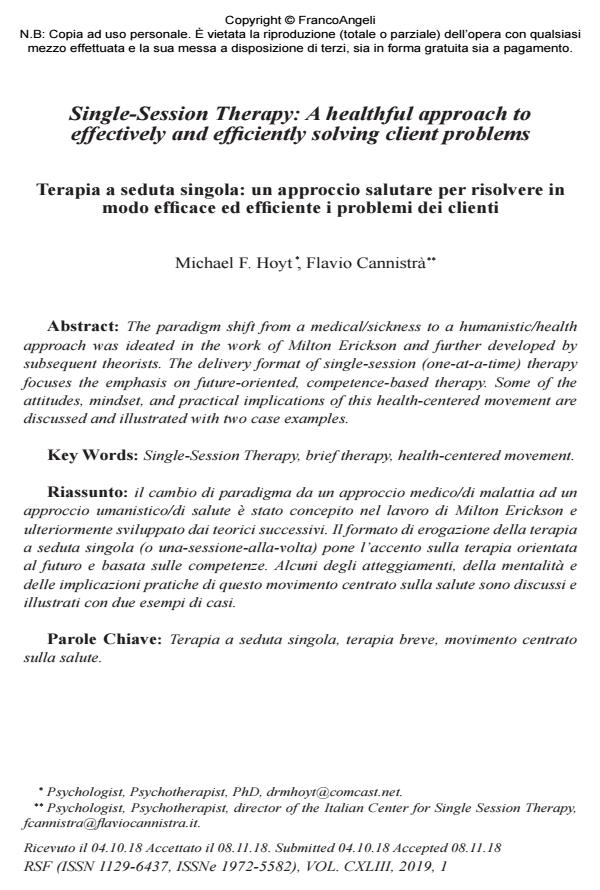Single-Session Therapy: A healthful approach to effectively and efficiently solving client problems
Journal title RIVISTA SPERIMENTALE DI FRENIATRIA
Author/s Michael F. Hoyt, Flavio Cannistrà
Publishing Year 2019 Issue 2019/1
Language English Pages 13 P. 73-85 File size 1842 KB
DOI 10.3280/RSF2019-001005
DOI is like a bar code for intellectual property: to have more infomation
click here
Below, you can see the article first page
If you want to buy this article in PDF format, you can do it, following the instructions to buy download credits

FrancoAngeli is member of Publishers International Linking Association, Inc (PILA), a not-for-profit association which run the CrossRef service enabling links to and from online scholarly content.
The paradigm shift from a medical/sickness to a humanistic/health approach was ideated in the work of Milton Erickson and further developed by subsequent theorists. The delivery format of single-session (one-at-a-time) therapy focuses the emphasis on future-oriented, competence-based therapy. Some of the attitudes, mindset, and practical implications of this health-centered movement are discussed and illustrated with two case examples.
Keywords: Single-Session Therapy, brief therapy, health-centered movement.
Michael F. Hoyt, Flavio Cannistrà, Single-Session Therapy: A healthful approach to effectively and efficiently solving client problems in "RIVISTA SPERIMENTALE DI FRENIATRIA" 1/2019, pp 73-85, DOI: 10.3280/RSF2019-001005